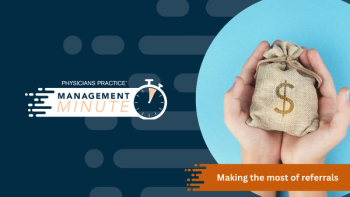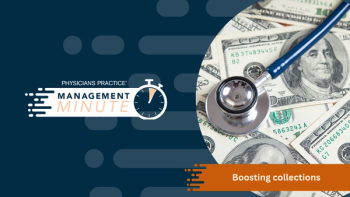
PayerView: How Do Your Payers Measure Up?
Fed up with payers who deny claims unreasonably, inexplicably lose them, or just take too long to pay? It's high time you did something about it. And now - finally - you have the information you need to act. Welcome to PayerView, the first-ever data-driven payer ranking based on how easy - or difficult - they are to work with.
It feels good to level the playing field.
Payers rank physicians on everything from E&M coding patterns to quality of care. They have reams of data at their disposal. But physicians are at a loss when it comes to assessing payers.
There has never been a way for physicians to gauge the performance of payers in meaningful terms. “There is not a lot of infrastructure in place to allow physicians to be more than price-takers,” says Kim LaFontana, vice president of payer performance management for athenahealth, a company that handles billing processes for thousands of physicians around the country.
That’s why Physicians Practice and athenahealth got together to bring you a first-of-its-kind index to rank payers, nationally and regionally, on how well they work with physicians.
The index, called PayerView, uses athenahealth’s aggregate data on thousands of billing transactions as the basis for ranking payers on how efficiently they reimburse physicians for their services.
Why did we bother? Because it’s high time physicians like you have a mechanism for sorting the best payers from the worst. You already know (or should know) how much your payers are paying you. And if you’ve been reading our annual Fee Schedule Survey, then you have a pretty good idea of how your allowables stack up against those of other practices in your region.
But understanding how well you’re being treated by insurers requires more than a quick glance at a fee schedule. What’s missing is a tool for measuring the dreaded “hassle factor” when it comes to dealing with payers.
How often does Payer A deny claims? How much time does your staff have to spend on the phone with Payer B sorting out problems? Does Payer C make a habit of “slow-paying” you? The answers to questions like these can help you decide whether to keep or drop a contract.
But only when you can interpret the answers. It’s not enough to have, as most practices do, a sense of which payers are the most troublesome based on staff complaints and hallway anecdotes. Suppose Payer A rarely denies a claim and is always responsive over the phone, but your staff tells you that its checks tend to come in later than anyone else’s. What if Payer B denies claims routinely but almost always backs down on appeal? Which one is better? Is either worth the trouble?
To make such judgments, you need a tool for analyzing patterns of payer behavior and enough data to make your analysis fair and useful.
That’s where PayerView comes in. We ranked payers using hard data gleaned from athenahealth’s rich database, weighting specific data points differently based on what’s most important to practices. (For detailed information on the measures we chose to evaluate payers, see “
The idea is to arm you with information about payer performance so you can make good business decisions about payer contracts. In turn, we’re also letting payers know how well they are treating providers relative to their competition. It’s a call for better cooperation.
About our methods
All PayerView data come from athenahealth, a service and software provider and the country’s largest revenue cycle management company for office-based physician practices. Because it handles millions of claims on behalf of practices across the country, its database is a treasure trove of information about how those claims were processed. With help from athenahealth’s number-crunchers, we were able to develop a profile of payer behavior from around the country - simply by examining their own claims processing histories.
How? We identified seven key measures to assess payers, and gave each one a weight based on its importance to physician financial well-being. Then, athenahealth queried its claims database to produce the results you’ll find here. (See “
Before we get to that, though, a few disclosures:
First, although the data we use are ample, we agree it would have been better if we’d gathered more data from more sources. Our sample size is significant but limited. Athenahealth will be adding new data quarterly at
Second, athenahealth has some nonrevenue-bearing relationships with several payers. These are information-sharing relationships aimed at streamlining payment processes on behalf of athena’s physician clients. The PayerView rankings are strictly data-based.
Third, the parent company of Physicians Practice - MedIQ - has a business relationship with Humana, which finished first among national payers in our rankings. MedIQ publishes a quarterly magazine called Humana’s Your Practice on the insurer’s behalf that is distributed to physicians in the Humana network. Again, the rankings we came up with are strictly data-based. Humana was treated no differently than any other payer.
What we found
OK, now for the results. (For our ranking of national payers,
First, Medicare isn’t so bad after all. Physicians love to rail against Medicare, largely due to its low fee schedule relative to many commercial insurers. But if you are looking for easy billing, Medicare is The Man.
Nationally, Medicare’s index score in our report is 92.2 percent, and on a regional basis, some Medicare carriers performed even better. Medicare B of Illinois turned in an impressive 94.2 percent index score.
Medicare has a bad rep among physicians, but there’s no real surprise in its success. Medicare sets the rules, and all its policies are published and publicly available, so it should be easy for providers and Medicare carriers to be successful in their communications regarding claims. Plus, the system has a high level of accountability. Carriers who don’t follow the rules are fired. Individuals can go to jail.
Medicare has “committed to being more transparent than some other payers. With other payers we say, ‘Tell us what you want [from claims], and we’ll give you that, but other payers can’t even tell us what they want,’” says Jeremy Delinsky, director of process innovation for athenahealth. He adds that Medicare has “sufficient scale that it’s in their interest to be lean. They are concerned about administrative loss ratios.”
Given Medicare’s advantage as the guys who set the rules, what is surprising is that any commercial payer outdoes them. But Humana swept the national payer field with an index score of 94.7 percent. That’s better than anyone, nationally or regionally, with the sole exception of little First Carolina Care in the South.
Humana also did especially well in our “not-on-file” measure - how many claims get “lost in the mail,” so to speak. It’s a surprisingly common phenomenon among payers, but much less so with Humana.
Mark Smithson, vice president of provider process and network operations at Humana, credits the company’s success to its efforts to streamline submission through electronic payment and its single processing point. “Not many claims are mailed, and what is mailed goes to only one address. I think that streamlines things a lot. I see our process starting with claims acquisition.”
“Reducing administrative complexity in the healthcare system plays a large role in the accuracy and timeliness of the payment process, which is where our efforts are squarely focused,” agrees Bruce Perkins, senior vice president for Humana.
Another surprise about Humana is that its days in A/R are relatively few even though physicians have to frequently call regarding a lot of their claims. Humana came in 23rd in terms of percentage of phone calls. You’d think all those calls would slow down payment. The fact that payment is still pretty fast shows that “when something goes wrong they are good at explaining what exactly went wrong and what has to happen to fix it,” says LaFontana.
Smithson explains that, of the physician inquiries that Humana receives, nearly 55 percent are answered either through a Web site or a telephone-based interactive voice response system. He says that method tends to be more efficient and accurate than calling a provider rep, and he argues it’s a decent replacement for higher-touch, personal communication models that are difficult for big companies to maintain. “When a call does come to us, we have state-of-the-art tools for getting information from the various legacy systems we have … and bringing it back in an easily read format for the customer service rep. To the extent that a claim is in dispute, we don’t burden the customer service rep with that; we have a separate unit that is dedicated to that function.”
All those ugly, disparate, legacy databases from acquired companies are the bane of many payers. In fact, that may account for the relatively poor performance of Indianapolis-based WellPoint and other rapidly growing national companies. Such companies “have incentives to do well, but they’ve grown through acquisitions,” explains LaFontana. “They just aren’t streamlined yet.” (For our ranking of regional payers,
Smaller, almost-local plans such as Fallon, Tufts, First Carolina Care, and Pacificare of Arizona did well, too.
Fallon says its smaller size makes it possible to have personal relationships with physicians. “We’ve heard from our providers that our reps are much more visible” than those from other payers, says Lisa Mancini Peari, director of provider relations at Fallon. “They actually educate providers instead of just delivering fruit baskets.”
“I think being small or regional, more focused, gives us an advantage in respect to how we relate to our network. It’s something we are trying to focus on even more over the last year or two,” says Rich Lynch, vice president of provider contracting at Tufts.
The Massachusetts market in general is devoted to payer collaboration. Initiatives such as Healthcare Administrative Solutions (
What doesn’t help the process?
A fragmented, uninspired Medicaid system. A few states, such as South Carolina and Ohio, have surprisingly efficient Medicaid programs, but the majority of them are slow and maddeningly inefficient. Medicaid performance probably has more to do with the complexity of its plan design than anything else. If that’s true, improving the system will be more complicated than getting a new claims manager or new software. It’ll take legislative action. The really sad part? Without a fix, more physicians will almost certainly leave the Medicaid program altogether.
Take New York Medicaid, the worst payer in the Northeast. LaFontana says its payment system involves “inconceivable complexity.” For example, New York Medicaid doesn’t accept the standard claim form, the CMS 1500; it has its own “standard” form. And physicians can’t just download that form; the state mails the forms out, sending just as many as each physician used last month. If you see more Medicaid patients this month, too bad. “You literally can’t bill. You run out of paper,” says LaFontana.
Medicaid of Illinois, fifth from the bottom of our Midwest list, “actually stops paying physicians anything once it runs out of budget. It’s getting close to six months every year they are not paying. But they still beat New York’s days in A/R,” observes Delinsky. We wanted to give the New York and Illinois Medicaid systems an opportunity to respond, but officials didn’t answer our queries.
“Why have we allowed the Medicaids to evolve to be 50 totally inefficient, redundant nightmares when the same system created Medicare?” asks LaFontana. Instead of always talking about Medicaid costs, she suggests, legislators should look at fixing some of the administrative waste. Solving such problems might make it possible to provide better care and broader access.
What can you do?
How can you use the PayerView data to improve life at your practice?
Start by acknowledging your own responsibility to develop productive relationships with your payers.
“I continually think that half the problem out there is on the physician side,” says Todd Welter, whose Denver-based Welter & Associates helps physicians negotiate with payers. “I’d be the first one to blame payers for whatever I can, but some of this is the physicians’ fault.”
Payers also lose money when there are a lot of denials and processing mistakes. Every time you have to call a payer, it costs them money just as it costs you. Generally speaking, payers aren’t out to “get” physicians.
Jamo Rubin, MD, founder and president of MPV, a software and services company that facilitates smoother payments and contracting, insists it’s wrong to look at the payment process as a battle. “It’s not doctor against payer; it’s the inability of the information systems to work together in a completely open way. … These worlds [physicians’ and payers’] are closer together than they are farther apart.”
Public policy issues aside, what does all this data mean when it comes to contract renewal time for individual practices? Do you drop low-ranked payers? What if they pay well?
Certainly, physicians should consider the hassle factor in getting paid for their services. “Are you cheating yourself if you’ll get half a percent more in pay from a payer, but have a huge hassle? If you are negotiating with Humana, you might want to take a slightly lower fee because you will get paid,” suggests Delinsky.
Welter also suggests making objective measures of payment efficiency part of your negotiation process with payers. “With established practices, I try to get them to rate the pain-in-the-neck portion equally to rates. That is [how] we come up with whom to go after first. Even a decent reimbursement rate doesn’t mean anything if you spend all the money trying to collect.”
Your analysis needs to be objective, he emphasizes. “It can’t be emotional. If you can’t submit a clean claim, it’s not the payer’s fault.”
Rubin of MPV suggests data about payer performance are best used to fix the process, not to make a go/no-go decision on a contract. Wise physicians “try to understand what specific issues are causing the problems,” he says. Analyze your own payment data and look for patterns for particular payers and particular products. When you find them, ask if the problem is caused by something on your end - submitting bad claims, misunderstanding coding rules - or is it something the payer’s systems can’t handle automatically. Look for a work-around that will make payment faster and more accurate. “It’s a feedback loop, not necessarily for a better rate but for a faster process,” says Rubin. “That’s a mutual benefit.”
For example, he cites one practice that realized one payer denied or slowed down every claim with a -62 modifier. The payer couldn’t process it; it was a claims-processing problem, not a contract problem. So, working with the payer, the practice figured out how to tweak the percentage reimbursement on other line items. The -62 still got denied, but the practice got its money anyway.
“You need deeper understanding of what the payer is having problems with. That elevates the conversation big time,” says Rubin. “You are talking to them unemotionally, with data, and at a higher level. It begins to take on the tone of a contractual discussion. And that gets people’s attention. … They understand that … you are not here to start a war; you are here to solve a problem.”
Pamela Moore, PhD, CPC is senior editor, practice management, for Physicians Practice. She can be reached at
This article originally appeared in the June 2006 issue of Physicians Practice.
Newsletter
Optimize your practice with the Physicians Practice newsletter, offering management pearls, leadership tips, and business strategies tailored for practice administrators and physicians of any specialty.














